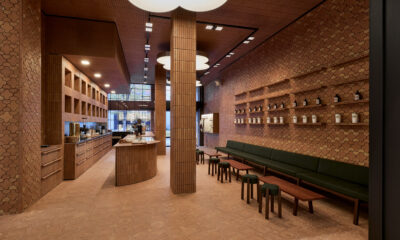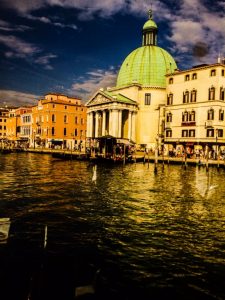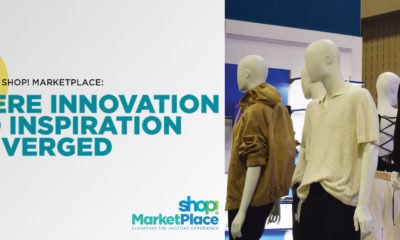I was overwhelmed by the astonishing sights and sounds of Venice, as the water taxi moored at San Zaccaria, just steps away from Piazza San Marco (Saint Mark's Square). Disembarking, I was immediately met by street vendors hawking their wares: everything from T-shirts that proclaimed, “I Love Venice,” to plastic gondolas, sure to find the back of closets in homes across America.
And then I entered Piazza San Marco. It didn't seem real, almost like a fantasy. It's said that Napoleon referred to the Piazza as “the drawing-room of Europe.” The sentiment of “Le petit Caporal” was clear as I stood mesmerized by the majesty of this open-air architectural phenomenon. St. Marks Basilica is the focal point of the Piazza, with its spectacular arches, marble trimmings and Romanesque carvings. The wondrous panorama before me was accentuated by the clock tower, completed in 1499, and the arcade along the 16th Century Procuratie, the offices of the keepers of the great Basilica.
And they were all there — you know — the regulars that seem to follow us everywhere. There was Gucci, Louis Vuitton, Prada, et al. But in deference to the Bard, where were the real merchants of Venice? And while I didn't meet anyone named Antonio, Portia or Shylock (characters in Shakespeare's intricate tale) once past the beehive of peddlers, and the magnificence of the architecture, the merchants of Venice were everywhere: in the arcades, across the bridges, along the canals and in the maze of narrow winding streets. They were under lit stained-glass signs, across from time-honored boutique hotels and next to beckoning restaurants that tantalize with extraordinary pastas, sumptuous cheeses and the exotic local catch of the day.
Nestled between gelaterias and trattorias (a trip to Venice would hardly seem complete without a bowl of fish soup from Trattoria alla Madonna) are leather shops, glass shops and the ever present mask shops. “Carnavale” is celebrated every February in Venice with visitors and locals alike donning fabulous, if not mysterious, papier-mâché masks — ah, a week in Venice is indeed like a night at the masquerade. The leather shops display a wide array of small leather goods ranging from handbags, purses and briefcases to clutches; all arranged in sequence of color, size and shape. The smell of the leather permeates the street, drawing you in. Sensory merchandising at its best. And once inside, there's a strong desire to buy everything.
Then there's glass, Murano glass. The trademark guarantees the authenticity of glass made on Murano Island using artistic techniques that are a thousand years old. A glass blower worked his magic in one window, demonstrating the art. It took a discerning eye, however, to distinguish the pedestrian from the true art. But once found, it was well worth the search. In fact, the search is part of the experience; perhaps something to consider as we design our selling spaces.
Shakespeare introduced us to Romeo's Juliet; crowds of tourists still gather around her famous balcony in Verona. He also introduced us to “Two Gentlemen of Verona,” and several scheming characters from Venice. He's molded our language, added depth to our vernacular and has shown us the world, both literally and figuratively, through images painted with the written word. But mostly, he taught us that inspiration is everywhere, particularly along the romantic streets of Verona and the twists and turns of every alley and canal in the spectacle that is Venice.
Advertisement
Eric Feigenbaum is a recognized leader in the visual merchandising and store design industries with both domestic and international design experience. He served as corporate director of visual merchandising for Stern’s Department Store, a division of Federated Department Stores, from 1986 to 1995. After Stern’s, he assumed the position of director of visual merchandising for WalkerGroup/CNI, an architectural design firm in New York City. Currently, he serves as the chair of the Visual Merchandising Department at LIM College (New York), and was also an adjunct professor of Store Design at the Fashion Institute of Technology. In addition to being the New York Editor of VMSD magazine, Eric is also a founding member of PAVE (A Partnership for Planning and Visual Education). Currently, he is also president and director of creative services for his own retail design company, Embrace Design.


 Headlines1 week ago
Headlines1 week ago
 John Ryan2 weeks ago
John Ryan2 weeks ago
 Headlines1 week ago
Headlines1 week ago
 Headlines2 weeks ago
Headlines2 weeks ago
 Headlines2 weeks ago
Headlines2 weeks ago
 Retail Buzz3 days ago
Retail Buzz3 days ago
 Headlines1 week ago
Headlines1 week ago
 Headlines2 weeks ago
Headlines2 weeks ago






























